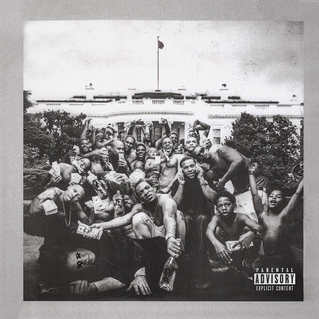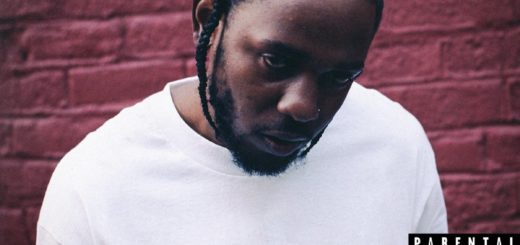Review: Kendrick Lamar ‘To Pimp A Butterfly’
We all collectively saw it coming; a couple of years and some change couldn’t have prepared us for To Pimp a Butterfly, the third studio album from Kendrick Lamar. Seemed like it was just a short while ago when he fucked up the collective psyche with Good Kid, M.A.A.D City, an album by all means that not only was hailed as one of Hip-Hop’s greatest albums, it was also collectively acknowledged as one of music’s best concept albums with great ease. Since then, in that short of a timespan, we got the severe verse ownage that Kendrick handed down in Big Sean’s “Control,” and a little after winning two grammys for “i” which folks saw as more as retribution for the couple of Grammys he got shut out on for Good Kid, M.A.A.D City. Then that same energy and wow factor we all got on “Control,” put us back into a relapse with the release of “Blacker the Berry,” which put the hype machine into overdrive for whatever Kendrick was going to put out next. Then, news started to trickle out about some of the collaborators such as Terrace Martin, Thundercat, and Bilal, three of the contributors who would be a part of the famed Kendrick “Untitled” performance on the last episode of The Colbert Report.
In the end, on the night of March 15th, we ended up getting To Pimp A Butterfly. Gone out the window should be any comparisons to his previous efforts, or any doubt at Kendrick’s ability to craft anything short of a masterpiece. With To Pimp A Butterfly, there is no story, no narrative, nor are there any accessible and trendy songs. In most circles, when you read of an album with those similar characteristics, you are left expecting the worst outcome, but along with the collaborators and producers assembled, Kendrick knocks yet another home run out of the part with his best album yet, utilizing elements of Boom-Bap, G-Funk, and Jazz, utilizing them all as a sonically sound vehicle to tackle themes of race, fame, identity, politics, and the astronomical expectations and wildest dreams that they place on an individual. From the start of the Flying Lotus produced “Wesley’s Theme,” which starts off with a slyly-placed sample from Boris Gardner’s classic soundtrack, it diminishes any doubt or uncertainty, and then immediately afterwards we go into the spoken-word meets free-jazz stylings of “For Free (Interlude)” which would be kin to The Roots “Writer’s Block” but with a pointed flare and a haphazard yet self-aware delivery at every word uttered. On “King Kunta,” the follow up to the more pointed and urgent “The Blacker The Berry,” its a G-Funk rebirth, where basslines are rich and deep, and the rhythm stays in a constant free swing as Lamar adopts a James Brown talking over the groove ethos. “Institutionalized” musters up the best Snoop Dogg guest appearance in quite sometime, and never has he sounded more at home on a beat with his Slick Rick like inflection as a launchpad for Kendrick’s verses, while “These Walls” tackles the topic of sex in the most poetic of ways, while Thundercat and Anna Wise both tag-team on the song’s chorus.
However, it is the tracks between “u” all the way to “Complexion (A Zulu Love)” that sound like a dystopian alternate universe that the Soulquarians painted so poignantly and effortlessly on Common’s “Like Water For Chocolate” where each and every track take it to the nether regions of Soul music and beyond. “u” starts off with a drunk-Dilla-esque sense of rhythmic quantizing, while the Pharrell-helmed “Alright” has Kendrick attacking mercilessly with his delivery. Elsewhere, “For Sale? (Interlude)” goes back to the warped drumming and whimsical instruments, whereas “Momma” evokes the punchy kicks and snares over a nicely set Lalah Hathaway sample. Then there’s “Hood Politics” where Kendrick lays the gauntlet to naysayer critics and individuals alike, reinforcing much of what he stated on “Control” and expanding that to the current day stresses that Washington DC consistently. The current day politricks of Washington DC is also tackled in “How Much a Dollar Cost,” a tale that Kendrick weaves about finding Jesus in a homeless person. “Complexion (A Zulu Love)” features the background vocals of Pete Rock, while Kendrick and Rapsody weave a narrative on love for one’s skin, regardless of the skin they are in and the love for one another.
The tail end of To Pimp a Butterfly kicks off with the lead-off single “The Blacker The Berry,” followed by the smooth and slick sounding “You Ain’t Gotta Lie (Momma Said),” a cautionary tale of staying true to one’s self and not fitting in, and then a new version of “i” kicks in, and ends with a rather passionate acapella about the forever controversial n-word and directing his words to Oprah Winfrey, its every bit as passionate as his performance of “i” on SNL, and then the album closes with the 12-minute opus known as “Mortal Man,” which is a magnificent closer, testing the listener’s limits of fandom asking “when shit hits the fan, is you still a fan?” and then closes out with a mindfuck of an outro where Kendrick interviews 2Pac about politics, the industry, and countless other things (the best part of the interview is when 2Pac states “we’re not really rapping, we’re just letting our dead homies tell stories for us.”) and closing out with how the album title of To Pimp a Butterfly came to be. In the end, everyone who owns To Pimp a Butterfly will come to the conclusion that they should be honored to see an artist like Kendrick flourishing while still staying true to his art, and To Pimp A Butterfly is in another stratosphere entirely than Section.80, or Good Kid, M.A.A.D City, and it hands 2015 its number one thing: the best album of the year. Time will tell as to whether this is a classic (replay value is still important, even though the critic’s pool has said otherwise, including this writer here) but its awesome to see an artist like Kendrick be able to carry out his celebrity and message on his own terms. That’s all we can ask for as appreciative music listeners in the end.
– Ali Elabbaby, @egyptoknuckles




















